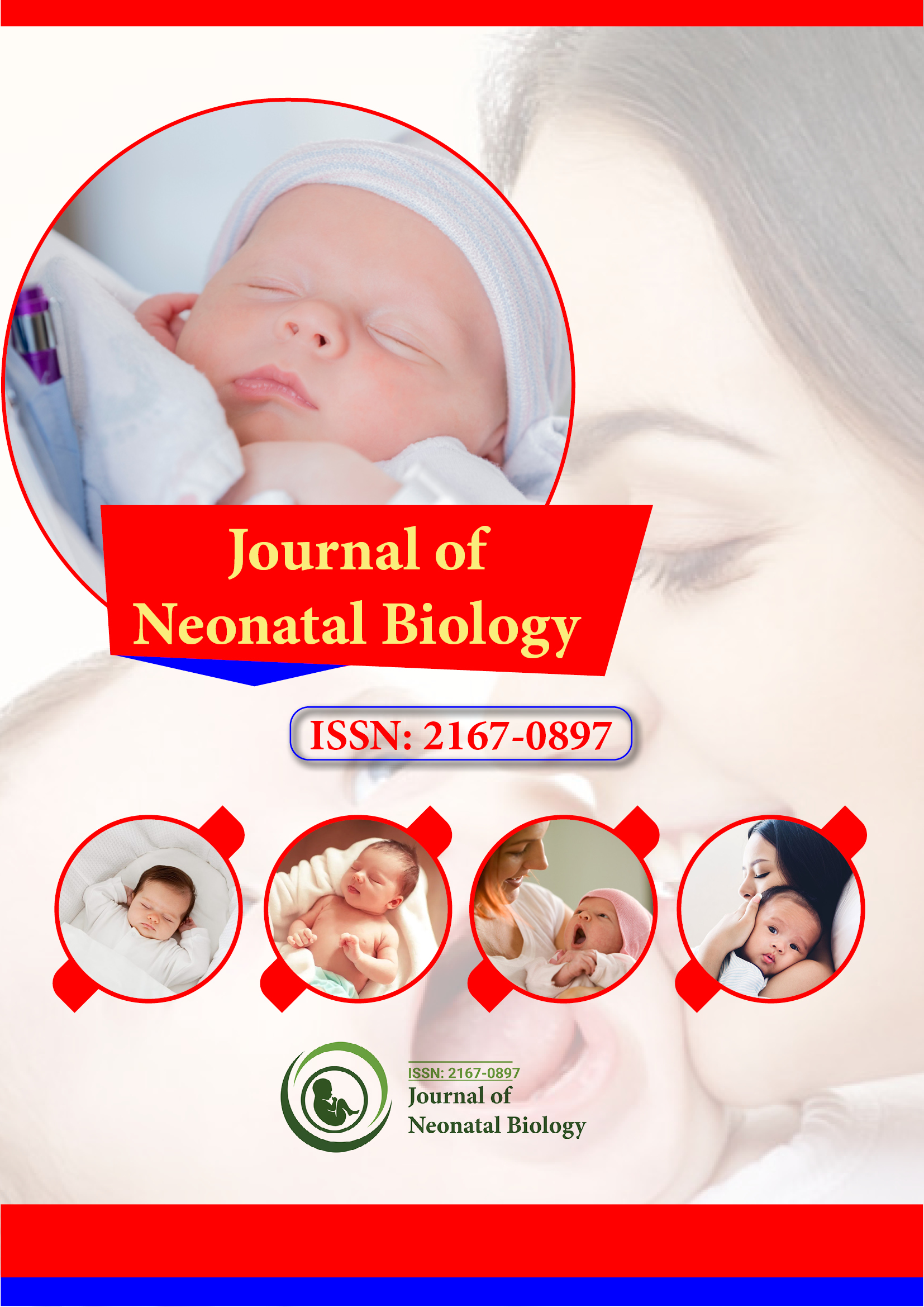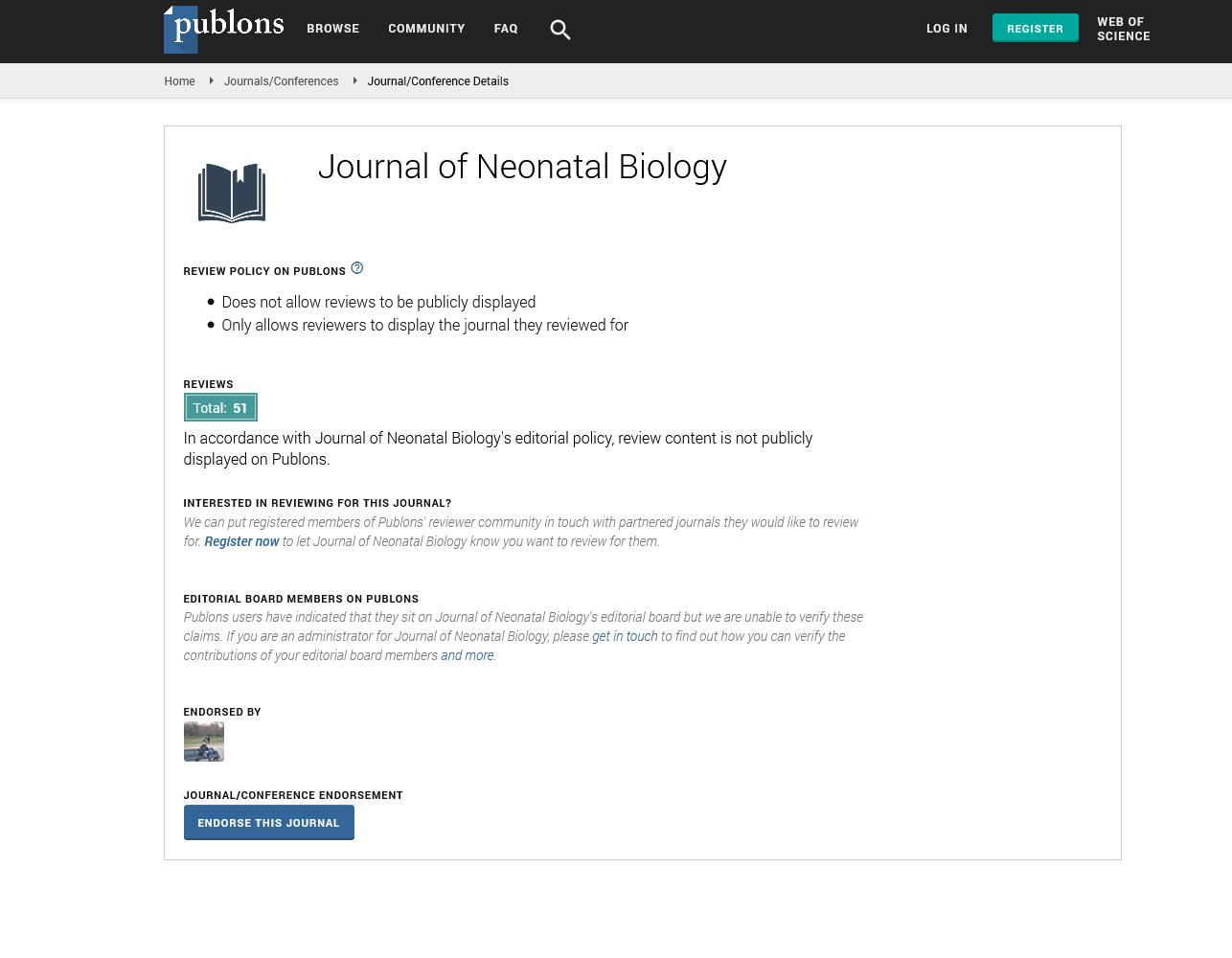Indexed In
- Genamics JournalSeek
- RefSeek
- Hamdard University
- EBSCO A-Z
- OCLC- WorldCat
- Publons
- Geneva Foundation for Medical Education and Research
- Euro Pub
- Google Scholar
Useful Links
Share This Page
Journal Flyer

Open Access Journals
- Agri and Aquaculture
- Biochemistry
- Bioinformatics & Systems Biology
- Business & Management
- Chemistry
- Clinical Sciences
- Engineering
- Food & Nutrition
- General Science
- Genetics & Molecular Biology
- Immunology & Microbiology
- Medical Sciences
- Neuroscience & Psychology
- Nursing & Health Care
- Pharmaceutical Sciences
Retinopathy of prematurity and being twins: Our results
9th International Conference on Neonatology and Pediatric Neurology
November 28-30, 2016 Valencia, Spain
Pasqua Betta, V Fatuzzo, C Giugno, A M Lanzafame, A Castro, C Mattia, M C Caracciolo, M Conversano, M Marletta, A Saporito and S Cilauro
Policlinico G. Rodolico Hospital-University of Catania, Italy
Scientific Tracks Abstracts: J Neonatal Biol
Abstract:
The retinopathy of prematurity (ROP) is an ischemic-vascular disease that affects preterm infants. Several studies show that the incidence of the disease is closely related to low gestational age (GE) and low birth weight (BW). The influence of being twins in the occurrence of ROP is not entirely clear yet. To date, the studies carried out so far on this matter have not showed unanimous results. The aim of our study was to show the role of being twins in the development of ROP and to evaluate whether assisted reproductive techniques can be an additional risk factor for the disease development. So we performed a retrospective study upon 253 preterm infants (131 males and 122 females) born between January 2011 and March 2015, whose GE was between 24 and 34 weeks of gestation (31.2; +/-2.4) and BW was between 450 and 2960 g (1619.2 +/-512.2). Of the 253 studied infants, 123 were twins (48.6%), including 23 babies born from triplet pregnancies (18.6%), and 59 (47.9%) were born after artificial insemination. Of the 253 infants, 83 (32.8%) developed ROP; 54 of them (65%) were twins. In particular, 38 infants (45.8%) developed stage I ROP (50% in twins, 31% in single children), 24 (28.9%) stage II ROP (27.7% in twins, 31% in single children) and 22 (26.5%) stage III ROP (22.2% in twins, 34% in single children). 32 patients (38.5%) have also developed signs of PLUS (35.9% in twins, 44% in single children). Of the 83 infants affected by ROP, 46 (55.4%) were treated with laser therapy; among them, 24 (52.17%) were twins. The 253 infants were divided into two groups: Group 1 (twins) and Group 2 (single children). The twins were also divided into 2 groups: Group A (twins born after artificial insemination techniques), Group B (the remaining ones). The populations were compared by performing the Ļ?2statistical test. Our results have showed a significantly higher chance of developing ROP in Group 1 than in Group 2 (p=0.000256) but they have not showed a significant difference in the severity of the disease (p>0.05). Furthermore, we didnā??t find any statistically significant difference by comparing Groups A and B (p>0.05). In conclusion, our data show that being twins is significantly related to the development of ROP. On the other hand, artificial insemination techniques do not seem to be an additional risk factor for ROP development.
Biography :
Pasqua (Mary) Betta is a Neonatologist, Anesthesiologist and Intensive Care Consultant. She is Vicar Chief Of NICU of the University of Catania. She is also specialist in Bronchopneumology . She has published more than 50 papers in indexed reputed Journals.
Email: mlbetta@yahoo.it

